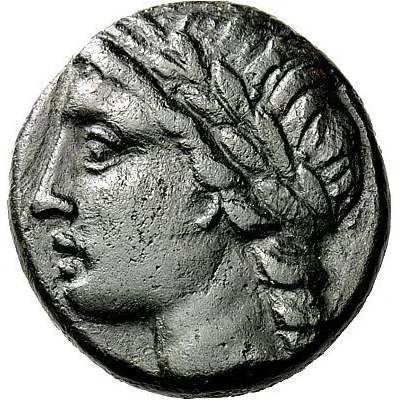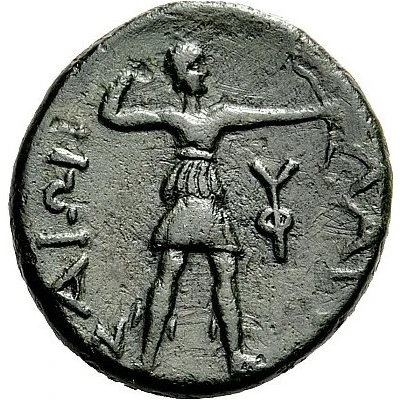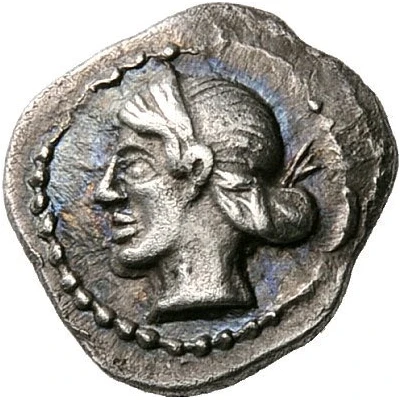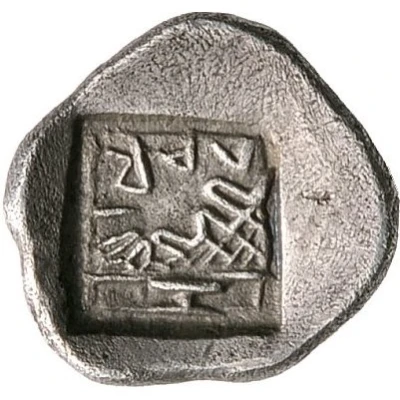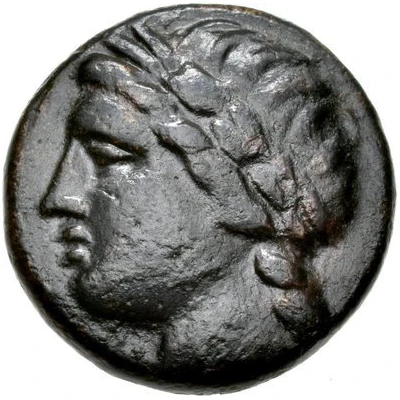
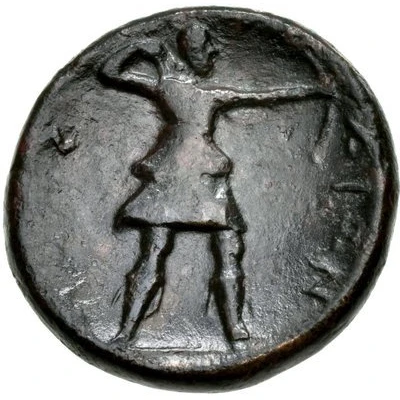

© Classical Numismatic Group, Inc.
Tetrachalkon 200 BC - 100 BC
| Bronze | 7.5 g | 21 mm |
| Issuer | Larissa (Thessaly) |
|---|---|
| Type | Standard circulation coin |
| Years | 200 BC - 100 BC |
| Value | Tetrachalkon (1⁄12) |
| Currency | Drachm |
| Composition | Bronze |
| Weight | 7.5 g |
| Diameter | 21 mm |
| Shape | Round (irregular) |
| Technique | Hammered |
| Demonetized | Yes |
| Updated | 2024-10-10 |
| Numista | N#285390 |
|---|---|
| Rarity index | 100% |
Reverse
Artemis shooting arrow to right. No monogram
Script: Greek
Lettering: ΛΑΡΙ ΣΑΙΩΝ
Interesting fact
The Tetrachalkon coin was used in ancient Greece during the Hellenistic period, specifically in the city of Larissa in Thessaly. The coin's name "Tetrachalkon" comes from the Greek words "tetra," meaning four, and "chalkos," meaning copper, referring to the coin's value, which was equivalent to four copper coins. This coin was made of bronze, a metal alloy consisting of copper and tin, and weighed 7.5 grams. Despite its relatively small weight, the Tetrachalkon coin played an important role in the economy of Larissa and surrounding regions during its time. It was used for everyday transactions and was also used to pay taxes and debts. Overall, the Tetrachalkon coin is an interesting piece of history that provides insight into the monetary systems and trade practices of ancient Greece.
